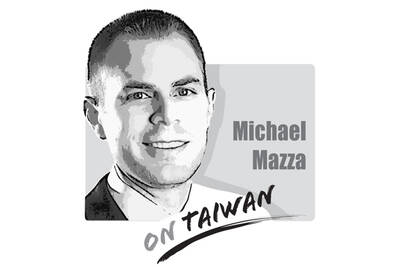For several weeks, US and UK intelligence agencies have been warning that the Kremlin might be planning a “false flag” operation against Ukraine which would give the more than 100,000 Russian troops massed on the Ukraine border casus belli to invade the country on the grounds of protecting ethnic Russians.
As sure as eggs are eggs, last week a Ukrainian nursery school in the breakaway Donbas region was hit by artillery fire. The leader of the Donbas separatist government immediately said that Ukrainian forces had shelled the nursery, while Kyiv blamed Russian forces for the attack and British Prime Minister Boris Johnson suggested he had seen intelligence showing the Kremlin had engineered the attack.
Yesterday, Russian President Vladimir Putin crossed the Rubicon. In a televised address to the nation, he called Ukraine a US puppet, officially recognized the independence of Ukraine’s breakaway regions, and declared the Ukrainian state a historical error and a fiction. Putin issued an ultimatum to Kyiv: Immediately cease military combat action against the breakaway regions or accept full responsibility for any subsequent bloodshed, and ordered Russian troops on the border to perform “peacekeeping functions” in the breakaway regions.
A military takeover now appears imminent and might already be under way. The US has pulled out all remaining embassy staff from Ukraine and other nations have followed suit.
Putin has played a long game and is essentially finishing the job that he started in 2014 with Crimea. His goal is to stymie any eastward expansion of the EU and NATO up to Russia’s western border, reinstall a pro-Russian puppet regime and turn Ukraine into a buffer state.
There are several striking parallels between Russia’s strategy toward Ukraine and China’s designs on Taiwan.
China, like Russia, also subscribes to a revanchist foreign policy. Beijing views Taiwan as a lost territory that must be united under its “one China” principle to achieve the “great rejuvenation of the Chinese nation.” Beijing also views Taiwan as a US puppet and a national security threat sitting off its east coast that must be neutralized.
China’s and Russia’s infiltration and destabilization tactics are also surprisingly similar. The Kremlin has been fomenting unrest in Ukraine for years, using what it calls “active measures” to set ethnic Russians against Ukrainians, weaken the authority of the Ukrainian government and erode national unity.
China’s “united front” tactics follow essentially the same strategy: infiltrate every corner of Taiwanese society — politics, commerce, Buddhist temples and even criminal gangs — to drive a wedge between benshengren (本省人) — the people who came to Taiwan before World War II and their offspring — and waishengren (外省人) — those who came from China with the Chinese Nationalist Party (KMT) after the war and their offspring.
China has also emulated the “gray zone” tactics first employed by Russia during the annexation of Crimea in 2014. Moscow deployed “little green men” — Russian troops without insignia on their uniforms, who could fight alongside separatists while affording Moscow plausible deniability.
Since then, Beijing has emulated these tactics in the airspace and in the waters around Taiwan. This has included developing a maritime militia of “little blue men” and, earlier this month, using a civilian plane to buzz Taiwanese sovereign airspace above Dongyin Island (東引) in the Matsu (馬祖) archipelago.
Given Beijing’s track record of emulating Russian strategy and tactics, the unfolding situation in Ukraine — and the West’s response to it — will be monitored closely on both sides of the Taiwan Strait.
The saga of Sarah Dzafce, the disgraced former Miss Finland, is far more significant than a mere beauty pageant controversy. It serves as a potent and painful contemporary lesson in global cultural ethics and the absolute necessity of racial respect. Her public career was instantly pulverized not by a lapse in judgement, but by a deliberate act of racial hostility, the flames of which swiftly encircled the globe. The offensive action was simple, yet profoundly provocative: a 15-second video in which Dzafce performed the infamous “slanted eyes” gesture — a crude, historically loaded caricature of East Asian features used in Western

Is a new foreign partner for Taiwan emerging in the Middle East? Last week, Taiwanese media reported that Deputy Minister of Foreign Affairs Francois Wu (吳志中) secretly visited Israel, a country with whom Taiwan has long shared unofficial relations but which has approached those relations cautiously. In the wake of China’s implicit but clear support for Hamas and Iran in the wake of the October 2023 assault on Israel, Jerusalem’s calculus may be changing. Both small countries facing literal existential threats, Israel and Taiwan have much to gain from closer ties. In his recent op-ed for the Washington Post, President William
A stabbing attack inside and near two busy Taipei MRT stations on Friday evening shocked the nation and made headlines in many foreign and local news media, as such indiscriminate attacks are rare in Taiwan. Four people died, including the 27-year-old suspect, and 11 people sustained injuries. At Taipei Main Station, the suspect threw smoke grenades near two exits and fatally stabbed one person who tried to stop him. He later made his way to Eslite Spectrum Nanxi department store near Zhongshan MRT Station, where he threw more smoke grenades and fatally stabbed a person on a scooter by the roadside.
Taiwan-India relations appear to have been put on the back burner this year, including on Taiwan’s side. Geopolitical pressures have compelled both countries to recalibrate their priorities, even as their core security challenges remain unchanged. However, what is striking is the visible decline in the attention India once received from Taiwan. The absence of the annual Diwali celebrations for the Indian community and the lack of a commemoration marking the 30-year anniversary of the representative offices, the India Taipei Association and the Taipei Economic and Cultural Center, speak volumes and raise serious questions about whether Taiwan still has a coherent India